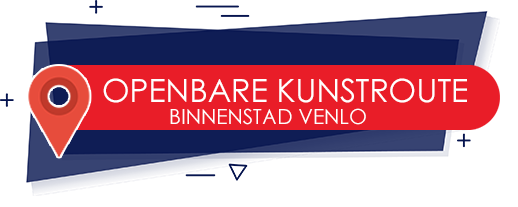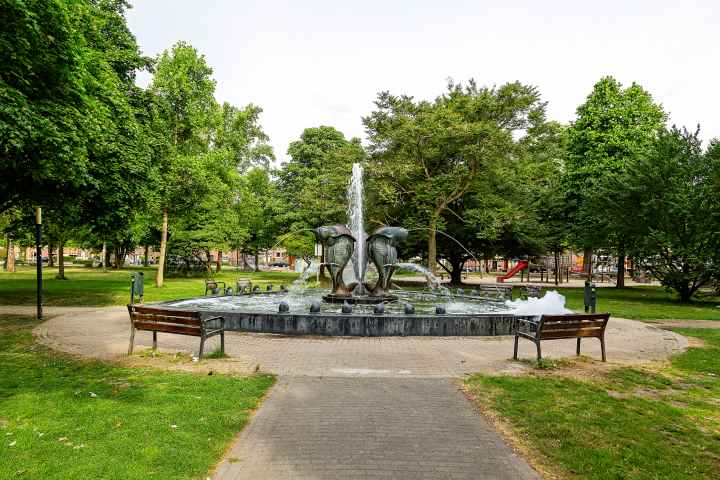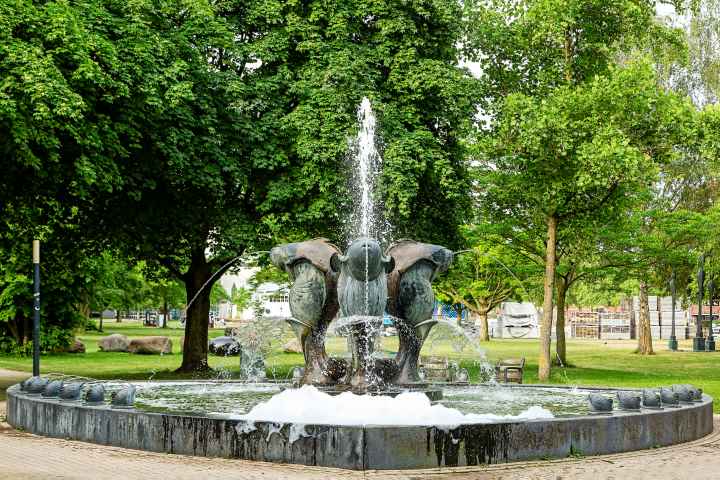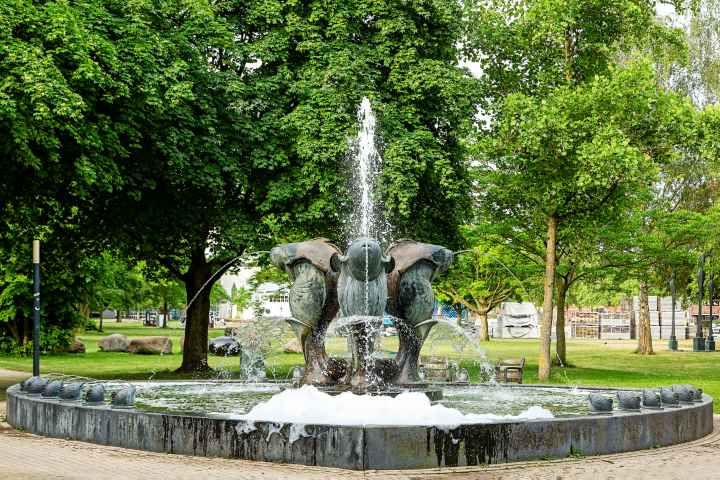Water sculpture
Juliana Park
Water sculpture/fountain – Ger Janssen
The Fountain, which occupies a prominent place in Julianapark, is a creation by artist Ger Janssen. It consists of a triangular water feature with a diameter of 10 metres. In the middle are three water-spouting fish and on the edges of the basin are 18 spouting fish heads. In the middle there is a vertically upwards spouting jet of water.
For many park visitors, young and old, the fountain is more than just a work of art; it is a real attraction. When the weather is good, you will always find people sitting on the benches around the fountain. Young people are there for the fun in the water, older people enjoy the play of the fountain.
The artist: Ger Janssen
The work of Venlo artist Ger Janssen is characterised by diversity. After completing his training at the StadsAcademie voor Toegepaste Kunsten in Maastricht, and a brief career in the advertising world, he chose to work for himself and let his imagination run wild.
After working as an illustrator for a long time, Janssen was offered the opportunity to design a bronze statue for the Dominican Church (now Domani) in Venlo. From then on, the creation of bronze sculptures became his main focus.
The sculptures speak for themselves; it is mankind in general that inspires Janssen in its movement and mimicry. Feelings become tangible in a pose, emotions are captured in a simple gesture.
The Juliana Park
A group of men playing petanque, young people playing, people lazing in the shade of a tree or sitting on a bench reading a book. As soon as the weather gets good, Julianapark is a place of meeting. For example, during the festivals that take place there in the summer months, such as the culinary event Lekker Venlo, dance event Stereo Sunday and the now famous Zomerparkfeest. The spot we now know as Julianapark, adjacent to Keulsepoort, is the spot where one of the four city gates in Venlo’s fortifications once stood.
Just outside the Keulsepoort, until the nineteenth century, was a location called the Elysian Fields. From 1875, it was the location of the shunting yard of the Köln-Mindener Bahn, an international railway connection between Hamburg and Paris with a stop in Venlo. Therefore, in that period, the road west of the park was called Hamburgersingel. After the war, it was changed to Deken van Oppensingel, after Dean Jules van Oppen, who died during the war as a resistance fighter in Camp Vught.
The people of Venlo also called the road Ponywaeg. There could be two explanations for this. In line of the road there used to be the Pope factory. The young ladies who worked there were the first in Venlo to have their hair cut in a Pony style. Another explanation could be that the hussars – stationed in Venlo between 1816 and 1913 – took their horses (Ponies) out on the Hamburgersingel.
In 1971, the Van Bommel van Dam Museum opened its doors in Julianapark, nowadays located in the former post office at the Keulsepoort. Since 2000, the Limburgs Museum has also been part of the park. After the departure of van Bommel van Dam, Foodhall MOUT settled in the drastically renovated museum building in 2022.
In Julianapark there are several works of art and also some parts of the former fortress walls, of which a part has been preserved underground.





